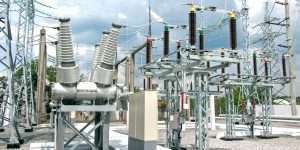The POWERFLEX® RV-K cable is a flexible power cable designed to circumvent the difficulties of…
Key points to Industrial plant design
Industrial production involves the coordination and implementation of several actions and phases. Procurement of machinery and raw materials, electrical cable lines, production lines, quality control, logistics… In order for there to be harmony between the different work areas, employees and production needs, it is essential to have a good industrial design and plant layout. These are the keys to the design of an industrial plant.

Any installation, commissioning and production in a factory depends on a number of factors. Regardless of whether the plant is dedicated to the manufacture of solar panels or electrical cables, the location, the available space and the internal distribution of the different existing elements must be assessed. All of this makes this initial phase critical for the proper functioning of the industrial plant.
Objectives of the design of an industrial plant
Industrial design and plant layout aim to find the most beneficial organisation of work areas and employees. Its optimisation is based on cost, safety and productivity.
Increased productivity
Finding the right organisation of machinery and materials in the plant reduces travel time between aisles, warehouses, equipment and employees, making better use of space. In this way, workers will spend less time receiving, moving and using the materials needed for manufacturing and will increase their productivity.
Worker safety
When designing an industrial plant, the risks arising from the industrial activity that pose a threat to the integrity of people must be eliminated or minimised as far as possible.
- Accessibility. Transit areas must be free of obstacles, and service and maintenance points must be easily accessible.
- Plant lighting and ventilation must facilitate work and provide a healthy working environment. Work areas should be easily visible.
- Fire safety measures. Every plant must have a fire-fighting system that includes elements for both prevention and extinguishing. Fire hoses and fire extinguishers are therefore necessary.
- Emergency plan. In order to know how to proceed in emergency situations, workers must have been trained in safety at work. In addition, the facility should have easily accessible escape routes and a first aid kit.
Economical savings
By optimising the design of the work area, transit times, production times, material storage and the area required for installation are reduced. The use of different levels for vertical distribution makes it possible to take advantage of the third dimension, achieving surface area savings. All these factors translate into significant savings that allow companies to dedicate these economic resources to areas that bring benefits.
Location of the industrial plant
Industrial production and all the facilities involved are not easily relocatable, so where to install or relocate the plant is a very important phase. Due to the variety of industries, the number of factors determined by the geographical location that can affect their operation are unmanageable. A series of steps are set out below to assist in choosing the best location for the industrial plant.
Evaluation of the determining factors: in this first phase, the company must define which elements should have the most weight in the choice of location: the transport of goods, supplies, services, land prices, institutional support, personnel and environmental conditions are some of the factors to be taken into account, which must be rated according to their importance within the activity.
Evaluation of the alternatives: after analysing the most important factors, a study will be made of the locations that meet the plant’s needs, establishing a list of alternatives and highlighting their strengths and weaknesses.

Choice of location: after careful evaluation of the advantages and disadvantages offered by each of the pre-selected sites, the final location is chosen. More subjective factors such as management preferences are likely to come into consideration at this point. However, it is essential to set out in detail the benefits and risks of the chosen location.




